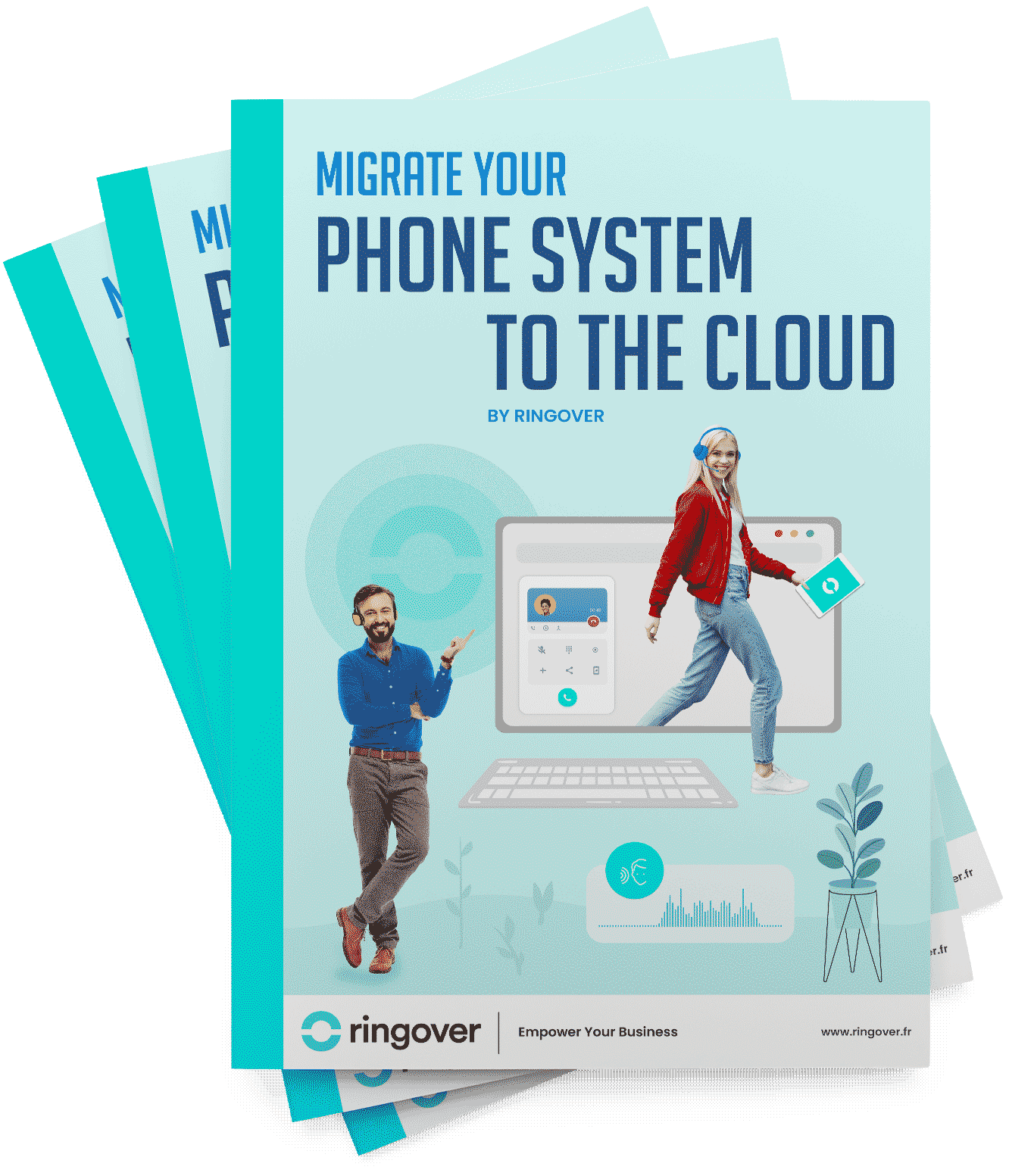Summary
- Key figures and facts on customer loyalty in insurance
- Customer loyalty strategies in insurance
- Loyalty in insurance: the current situation
- How to retain your clients in insurance and build policyholder loyalty
- Customer loyalty in insurance: Should we really oppose automation and humanisation?
- In conclusion
- Sources
Loyalty is one of the major challenges for insurance professionals. Long seen as a given, policyholder retention is now a strategic issue that can no longer rely on mere customer inertia. In other words, professionals must rethink their approach.
What, then, are the main obstacles to loyalty in insurance? How can they be overcome to build a lasting relationship with clients? Here's a breakdown of the challenges and the strategies to adopt to turn a policyholder into a loyal customer.
Key figures and facts on customer loyalty in insurance
- Nearly one out of two consumers considers the customer experience as the number one criterion for choosing a provider. (Kubra, 2022)
- A lack of transparency on pricing until the final stages of the process can create mistrust. Two-thirds of prospects who abandon midway cite the absence of a quick estimate as the main reason for leaving. (Eficiens)
- Some companies record a loss of 25% of their single-contract clients within the first 18 months following subscription. (L'Argus de l'assurance)
- The complexity of administrative procedures discourages young consumers: 20% of them have already given up changing insurers for this reason. (L'Assurance en Mouvement)
Customer loyalty strategies in insurance
| Loyalty Strategy | In Summary |
|---|---|
| 1. Adapt onboarding to customer profiles | Segment clients and offer personalised support for a smooth and engaging experience. |
| 2. Establish and maintain trust | Rely on transparent communication and an empathetic approach to strengthen the client relationship. |
| 3. Optimise upselling and cross-selling | Offer complementary services suited to actual needs to provide added value. |
| 4. Focus on omnichannel | Ensure seamless continuity between different channels to avoid any disruption in the customer experience. |
| 5. Ensure consistency at every interaction | Deliver a consistent experience across all touchpoints to strengthen loyalty. |
| 6. Personalise the customer relationship | Use data to offer tailor-made services and products, adapted to policyholders' expectations. |
| 7. Improve customer support | Adopt a proactive and empathetic approach to exceed expectations and strengthen engagement. |
| 8. Gather customer feedback | Use feedback to adjust the offering and show policyholders that they are being heard. |
| 9. Develop referral programs | Encourage recommendations through rewards to combine acquisition and retention. |
| 10. Build a lasting relationship | Go beyond expectations with personalised touches to deepen attachment to the brand. |
Loyalty in insurance: the current situation
Customer retention and loyalty in the insurance sector are complex challenges to tackle. Why?
Subscription process remains impersonal
The increasing automation of subscription processes in the insurance sector has undeniably simplified procedures. Everything moves faster, more efficiently, with minimal human intervention.
Yet this gain in speed comes with a side effect that should not be overlooked: a customer experience that becomes dehumanised. However, according to a study by Kubra published in 2022, nearly one in two people say they consider customer experience as the top criterion for choosing a provider.
In the absence of real interaction, the relationship between the insurer and the client struggles to be built on trust. Yet in a field where engagement largely relies on the perception of safety—and above all, support—this distance can truly become a barrier to loyalty.
Let's not forget that an insurance contract is not a mere transaction; it is a commitment which, to be lasting, must be based on a strong relationship.
Customer expectations remain unchanged: clear communication, personalised follow-up, and the feeling of being more than just a file processed by an algorithm.
When faced with fully automated journeys without any possibility of human interaction, many may feel a form of detachment, even mistrust.
Technological efficiency is not always enough to compensate for the absence of authentic interactions, and this is precisely where insurers have an opportunity.
Document submission: a pivotal moment
In a policyholder's journey, submitting the required documents for subscription or contract management represents much more than a mere formality. It's a turning point: either the experience goes smoothly and strengthens client engagement, or the slightest hiccup sows doubt and slows the process.
A missing document, an unrecognised format, a delayed validation… it takes little for the perceived smoothness to turn into frustration—or even mistrust.
And in a world where customer patience is often tested, these obstacles can quickly lead to total abandonment.
Navigating between different platforms, sending follow-ups, or waiting for validation without visibility on actual prices and delays creates friction that weighs on the user experience.
The opacity of pricing up until the final steps of the process can quickly become a factor of distrust. For two-thirds of prospects who abandon midway, the inability to get a quick quote is the main reason they leave. And we understand them: no one wants to invest time in a complex process only to face an out-of-budget price in the end.
In an environment where comparison is just a click away, consumers expect clarity from the outset. Their commitment relies on a balance between trust and control over their choices. Without early price transparency, uncertainty takes over—along with the risk they'll look elsewhere.
To avoid this pitfall, insurers have every reason to simplify these steps and offer clear, responsive support. A streamlined, transparent process combined with proactive assistance not only accelerates contract signing: it reassures, engages, and strengthens the customer relationship over the long term.
A volatility that redefines loyalty
In a context where every expense is scrutinised, policyholders no longer hesitate to optimise their costs—especially as the legal framework favours them. Provisions such as the Hamon Law give them unprecedented freedom to cancel their contract without constraints after one year.
First consequence: Loyalty to an insurer is no longer a given, but a constantly questioned choice.
Faced with this increased volatility, relying on customer inertia is no longer enough. Satisfaction cannot be assumed—it must be built, day after day, through services that meet expectations and flawless responsiveness.
Each interaction becomes a chance to prove the value of quality support. Focusing on customer experience is no longer just an asset; it's a necessity to turn freedom to leave into a desire to stay.
Create a personalised and efficient policyholder experience with Ringover’s powerful business phone system, which offers IVR menus, omnichannel communications, and more.
How to retain your clients in insurance and build policyholder loyalty
Let's explore a few relevant measures to improve your loyalty process.
1. Adapt your onboarding process to different client profiles
Just like dossier setup, onboarding is a key moment in the relationship between an insurer and their client. It's partly where everything plays out: a smooth and tailored experience boosts engagement, while a poorly adapted journey can quickly sow doubt.
Each client arrives with their own background, specific expectations, and level of familiarity with insurance processes. Ignoring these differences means risking a standardised experience that speaks to no one.
Instead of imposing a one-size-fits-all path, it's wiser to segment profiles and adapt the support accordingly. This can involve personalised guides, interactive tutorials, or even a dedicated advisor for more complex cases.
By anticipating needs and reducing friction, insurers turn a mere formality into a real opportunity to build connection and instil trust from the very first interaction.
2. Trust: a key link in your client relationship to preserve
Without trust, the relationship between insurer and client has little chance of lasting.
It is neither guaranteed nor obvious, but a fragile balance built with every interaction. An implicit promise the insurer must keep: to be clear, reliable, and attentive.
This starts with transparent communication. No hidden fees, no vague clauses revealed too late. Every condition must be clearly explained, every commitment honoured.
But trust doesn't rely solely on clear contracts. It's also fueled by an empathetic stance—a capacity to respond flexibly to client concerns and offer tailored solutions. More than just an asset, it's the foundation on which all loyalty rests.
Whether you're an agency manager, broker, or contract administrator, you can rely on tools like conversational analytics solutions to leverage every client interaction and turn them into meaningful case studies.
Indeed, using a conversational intelligence software connected to your CRM and telephone system allows you to deeply analyse your client exchanges and obtain personalised recommendations on the effectiveness of your messaging.
3. Upselling and cross-selling are still safe bets
Offering more is one thing, but offering better is another: that is the challenge of upselling and cross-selling strategies in insurance. When well executed, they don't just increase profitability, they also strengthen loyalty by bringing real value to clients.
Encouraging the subscription to multiple policies – auto and home, for example – or suggesting broader coverage should not be seen as a mere commercial approach.
When relevant, the offer becomes an opportunity for the client: a better level of protection, savings across all their policies, simplified management.
A multi-risk insurance with attractive discounts can thus tip the balance in favour of a lasting relationship with the insurer. The essential thing remains to adopt a tailor-made approach, where each recommendation meets a real need rather than a purely transactional logic.
4. Omnichannel is no longer optional
Clients move from one channel to another with a fluidity that no longer leaves room for silos. An email sent in the morning, a chat message in the afternoon, a phone call the next day: each interaction must follow in continuity, without break or unnecessary repetition.
Being present on multiple channels – phone, live chat, email, social media, online customer space – is no longer enough. What matters is the consistency and responsiveness of the experience offered.
The challenge is simple: allow each client to choose their preferred communication method without sacrificing service quality.
A smooth journey, where the history of exchanges is preserved and taken into account, reinforces not only satisfaction but also the perception of effective and personalised support.
Again, specific solutions like Ringover's or Zendesk's omnichannel contact centre software can be very useful to you, insofar as they help you stay consistent and close to the concerns of your policyholders.
5. Stay consistent at every customer interaction
As mentioned in the previous point, maintaining customers' trust involves impeccable consistency at every interaction. Whether it's a conversation with an advisor, an exchange with a salesperson, an automated message, a blog article, or a follow-up email; each point of contact must embody the same values and the same quality of service.
This uniformity is not limited to the appearance or tone of the communication, it also touches on the substance of the exchange. Clients must feel that, no matter the channel used, the experience remains smooth, reliable, and aligned with their expectations of the brand.
For a professional in the sector, this means ensuring that every exchange, even automated, respects the established quality standards, while staying true to the company's image. A homogeneous experience, thought through holistically, is a guarantee of long-term loyalty.
6. Personalise the customer relationship as much as possible
In the insurance sector, personalising offers and communications stands out as an essential lever for strengthening customer loyalty.
By wisely using customer data, insurers can better understand the needs and preferences of each person, thereby opening the door to tailor-made products and services.
For example, Direct Assurance, the subsidiary of Axa, launched a new car insurance contract called YouDrive. This one proposes to adapt the amount of the insurance premium to the policyholder's driving.
How? By asking them to install a connected device in their vehicle. In summary, the better the policyholder's driving, the lower their monthly premium becomes. This touch of gamification helps build customer loyalty and potentially reduces the risk of accidents.
7. Improve customer support by betting on proactivity
Quality customer support is a true pillar to guarantee long-term loyalty. For insurers, it's not just about meeting customer expectations, but exceeding them. Truly effective assistance relies on call centre training so agents have technical skills and empathy.
They must be able to quickly grasp the clients' concerns while providing clear and precise solutions.
Accessibility also plays a crucial role and this naturally echoes the omnichannel strategies mentioned earlier.
Agility in responses is also a success factor. Indeed, clients don't have time to waste, but a quick and suitable answer can turn a simple exchange into a memorable experience. Clients look for a service that understands them, adapts to their specific needs, and offers concrete solutions—and without delay.
It also comes down to the ability to anticipate needs. A proactive approach, where insurers don't just respond to problems but take measures to prevent them, makes all the difference. It instils a feeling of security, thus reinforcing trust and customer loyalty.
8. Ask for clients' opinions
Asking for clients' opinions constitutes a real opportunity for insurers to refine their approach and respond more precisely to their policyholders' expectations.
By regularly collecting their feedback—whether through satisfaction surveys, focus groups, or online feedback platforms—insurers can not only identify areas for improvement but also adjust their offers in real time.
It is clear that this approach goes beyond simple data collection: it sends a clear message to the clientele. By inviting clients to share their opinion, the insurer shows that it is actively listening to them and is determined to offer a service that is always more suited to their needs. This also creates a sense of partnership, where each piece of feedback is taken into account and contributes to the co-construction of the service.
Even more, this willingness to engage in dialogue helps establish a transparent relationship. When a client sees that their feedback is heard, they feel valued, and by extension, their attachment to the insurer is strengthened.
The key here is to integrate clients' suggestions into a continuous improvement strategy, a way of showing that each experience, whether positive or negative, becomes a lever for perfecting the service.
9. Rely on referral programs to combine loyalty and acquisition
Referral programs offer a double advantage: on the one hand, strengthening the loyalty of existing clients, and on the other, attracting new policyholders through natural recommendations.
A satisfied client is often the best ambassador for a brand, and encouraging them to share their positive experience with those around them can prove much more effective than a traditional advertising campaign.
To maximise their impact, these programs must be carefully designed. A well-thought-out reward—whether it be discounts on premiums, redeemable loyalty points, or other concrete benefits—motivates clients to get actively involved.
But beyond the financial incentive, it is the overall customer experience that determines the success of these initiatives. A smooth service, transparent communication, and real added value are the elements that push a client to recommend their insurer, beyond just the reward.
A well-structured referral program thus creates a virtuous circle: satisfied clients become advocates, attracting new policyholders who, in turn, can take part in the same program.
10. Go beyond expectations to create a lasting relationship
Providing flawless service is no longer enough: policyholders today are looking for an experience that stands out, an attention that goes beyond simple contractual follow-up. A client who feels valued, listened to, and understood will be much more inclined to remain loyal to their insurer.
This attention to detail can take different forms. A special discount to mark a birthday, a personalised message on the occasion of a key event, or even tailored recommendations to adjust coverage to changes in the client's life. These gestures, even simple ones, create an emotional connection and strengthen attachment to the brand.
Customer loyalty in insurance: Should we really oppose automation and humanisation?
When discussing the issues of customer loyalty in insurance, automation and humanisation are often seen as being in opposition. In reality, these two approaches are not mutually exclusive, but complement each other harmoniously.
In fact, these two approaches do not oppose one another, but enrich each other. Automation improves efficiency and responsiveness, while humanisation brings a relational dimension essential to customer satisfaction.
The contribution of technology
Thanks to technological advances, chatbots, voicebots, and artificial intelligence solutions handle simple requests, thus reducing response times.
CCaaS solutions (Contact Centre as a Service), for example, identify callers, analyse their needs, and direct them to the most relevant contacts, while transcribing conversations to facilitate follow-up.
A human touch is key to creating loyalty
These tools must not be perceived as a substitute for human interaction. Their true value lies in their ability to free up time for professionals in the sector, thus allowing them to devote themselves to more complex or emotional situations.
The human aspect remains the cornerstone of the customer relationship. In the insurance sector, trust plays a key role, and it is precisely through authentic interactions that this trust is built. Advisors, trained in active listening and emotional intelligence, embody the voice and values of the company.
Betting on synergy
The main challenge for insurers is therefore to find the right balance between technology and human closeness.
A hybrid approach, where AI anticipates the needs of clients and offers them solutions before they express them, while leaving room for human intervention for the most critical moments, seems to be the key.
In conclusion
Customer loyalty in the insurance sector guarantees profitability and supports business growth. It rests above all on a seamless experience, where each interaction strengthens the relationship of trust. Clarity of offers, support at each stage, and tailor-made services: these are the pillars of lasting commitment.
Automation and open valuable perspectives to smooth the customer journey, but they cannot replace the human dimension of the relationship. An instant quote, simplified contract management—this is good, but an available advisor, capable of anticipating a need before it becomes an irritant—this is even better.
To build loyalty is to transform a contractual obligation into a chosen relationship, where the insured does not stay by default, but by conviction. In a market where comparing, cancelling, and subscribing is done in a few clicks, each interaction is an opportunity to prove your value. And in this area, there is no shortcut: trust cannot be imposed—it must be earned, day by day, through kept commitments and impeccable service quality.
Sources
- https://www.legifrance.gouv.fr/
- https://www.kubra.com/
- https://www.eficiens.com/
- https://www.lassuranceenmouvement.com/
- https://www.argusdelassurance.com/
Published on May 12, 2025.



